Course: Network Fundamentals and Troubleshooting

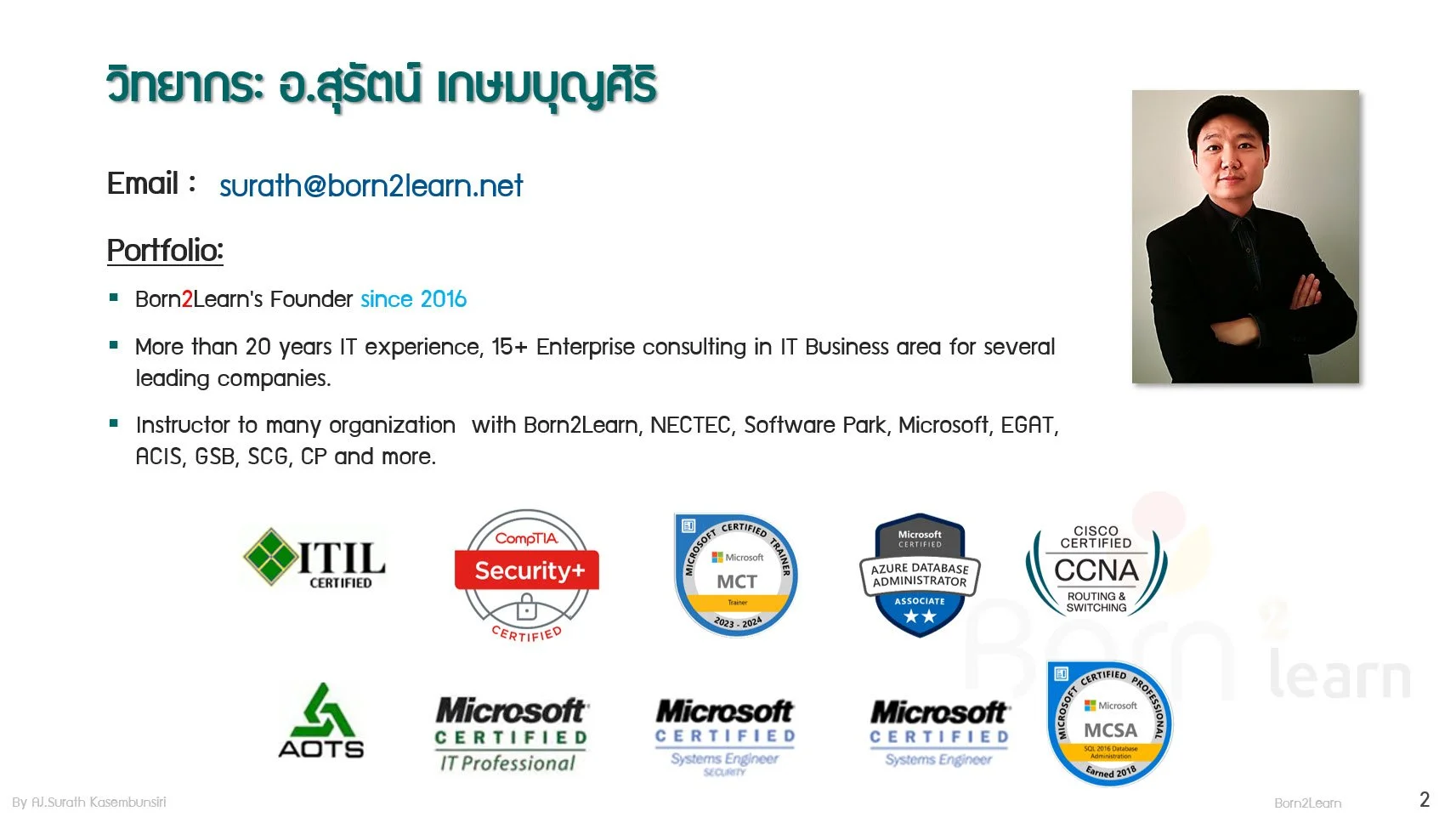

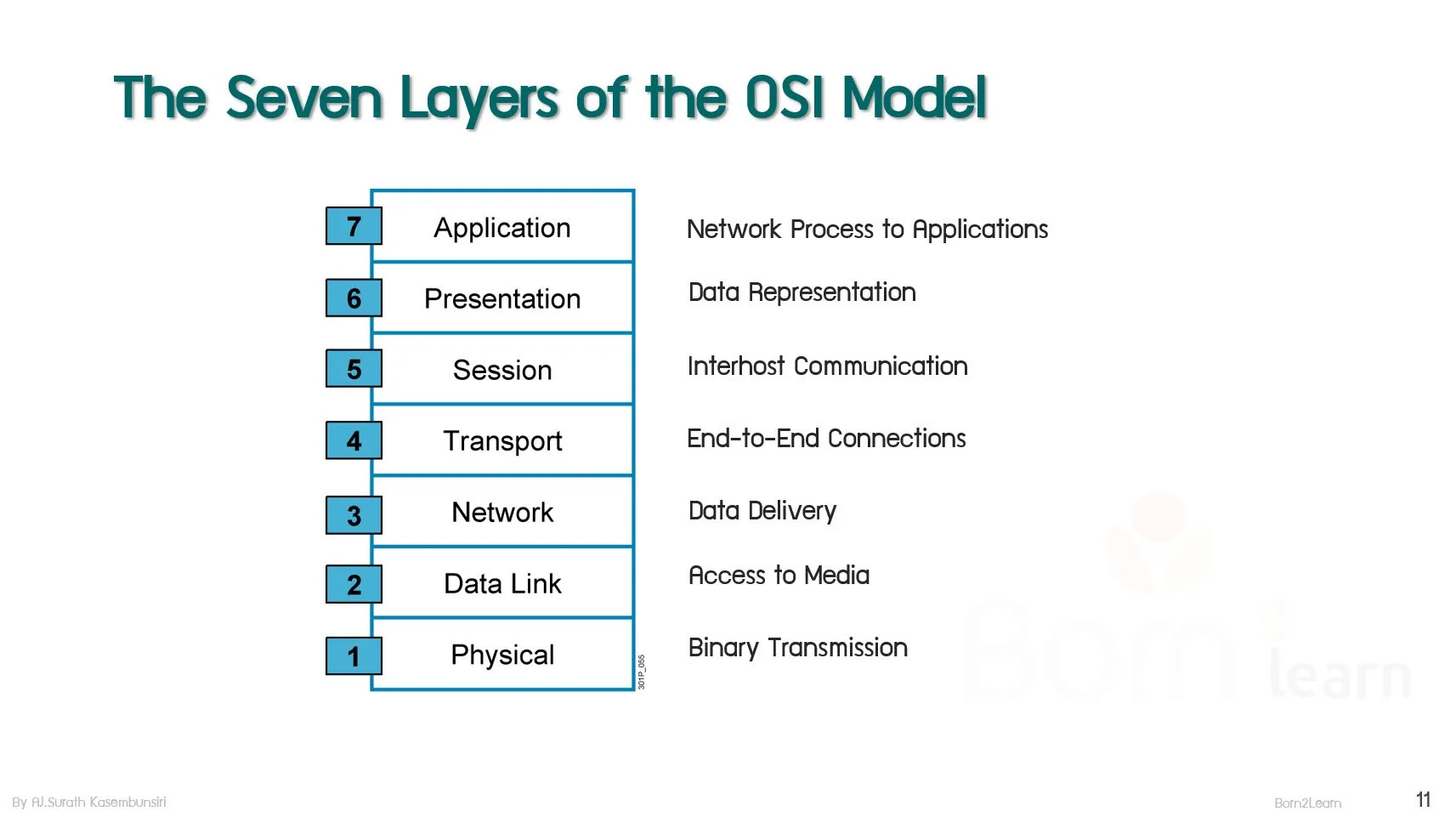



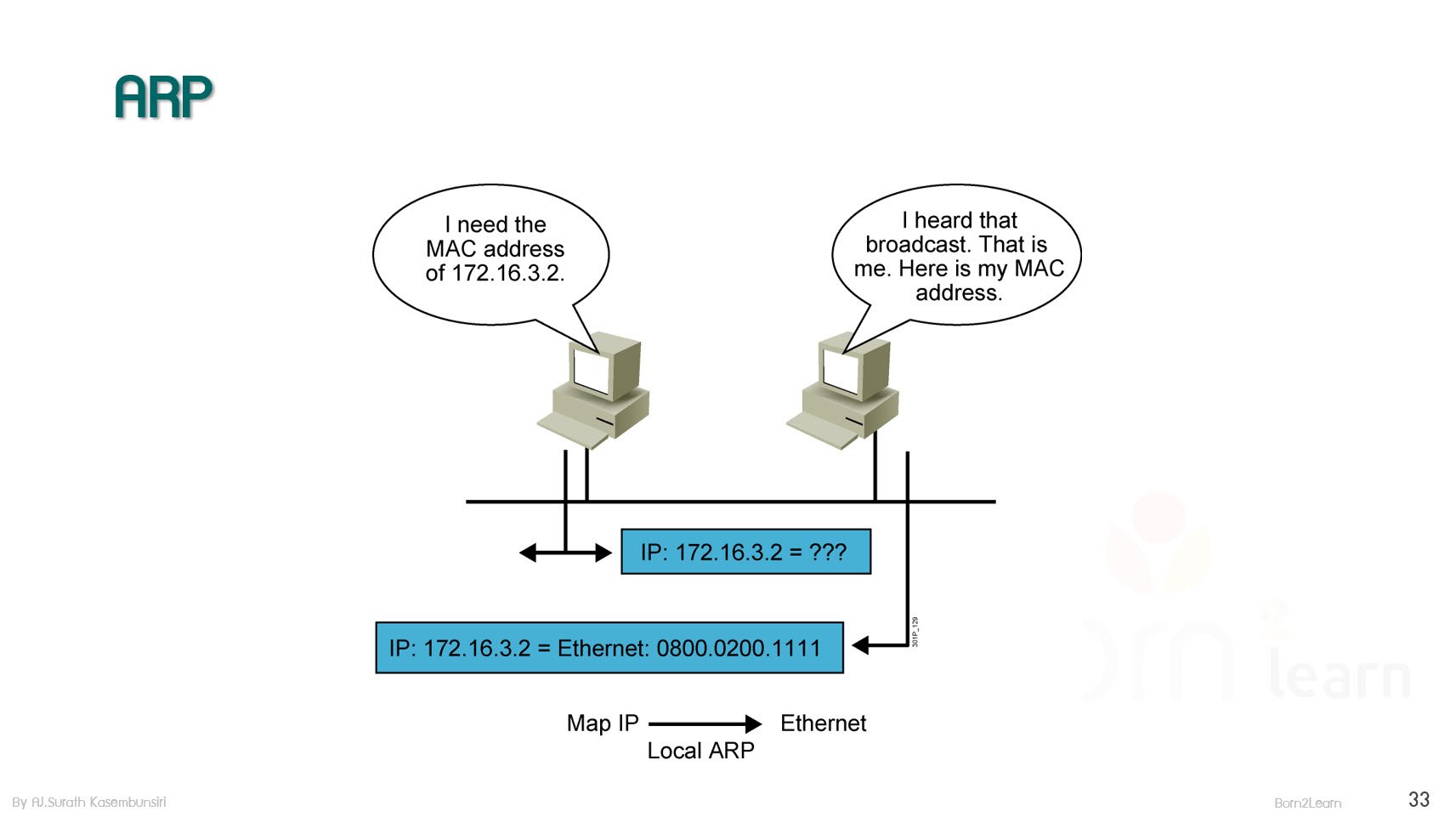


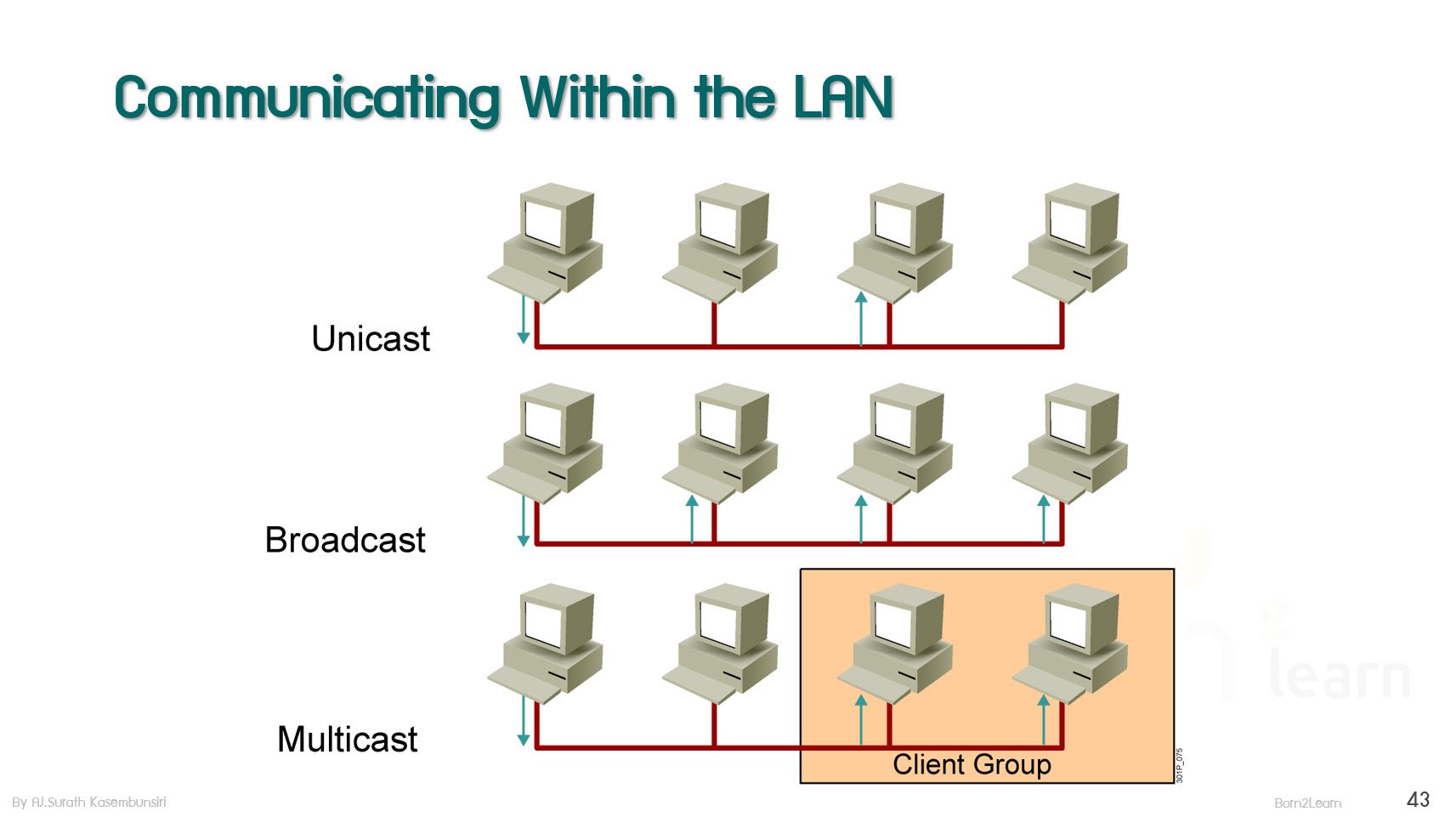








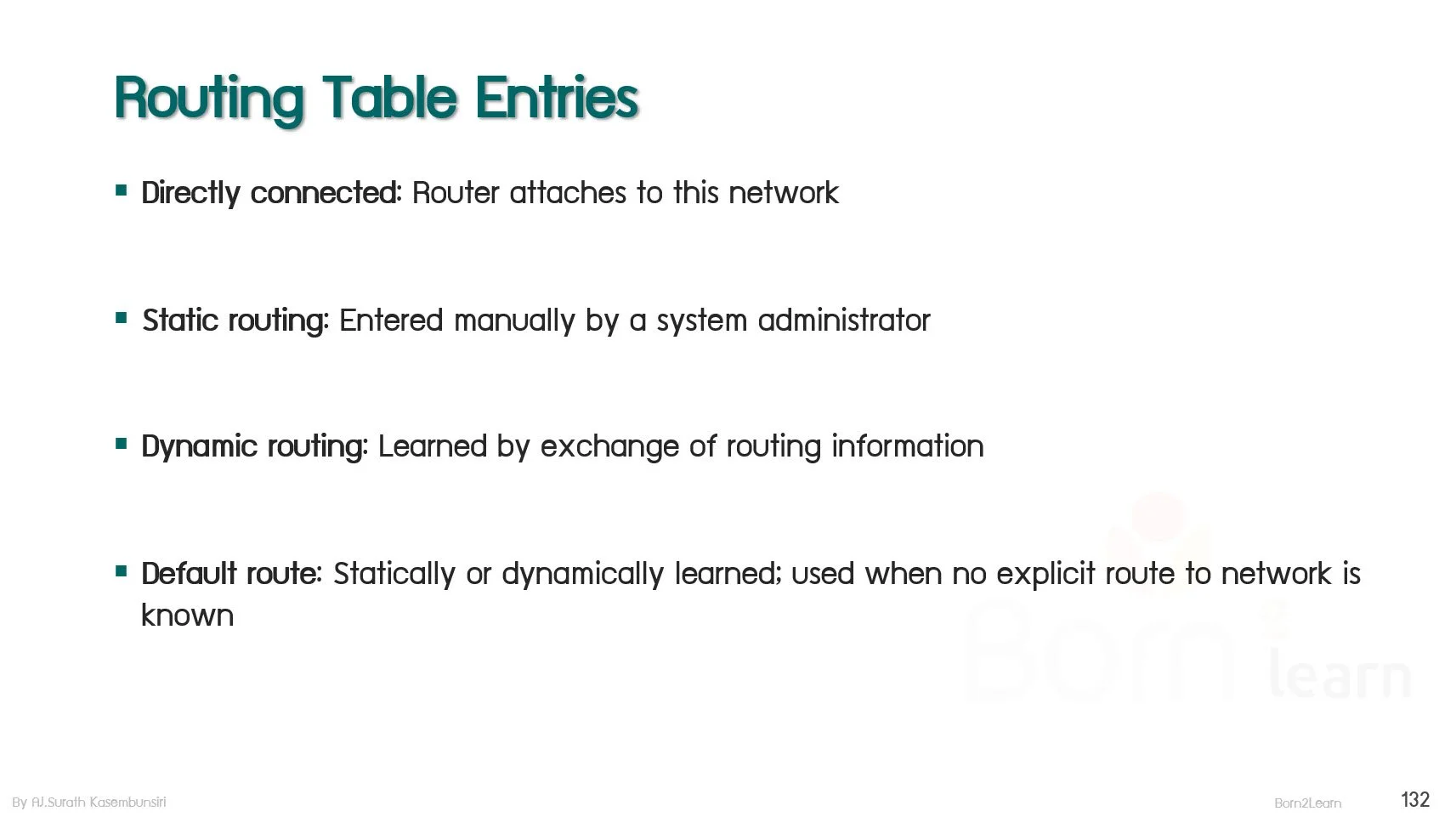




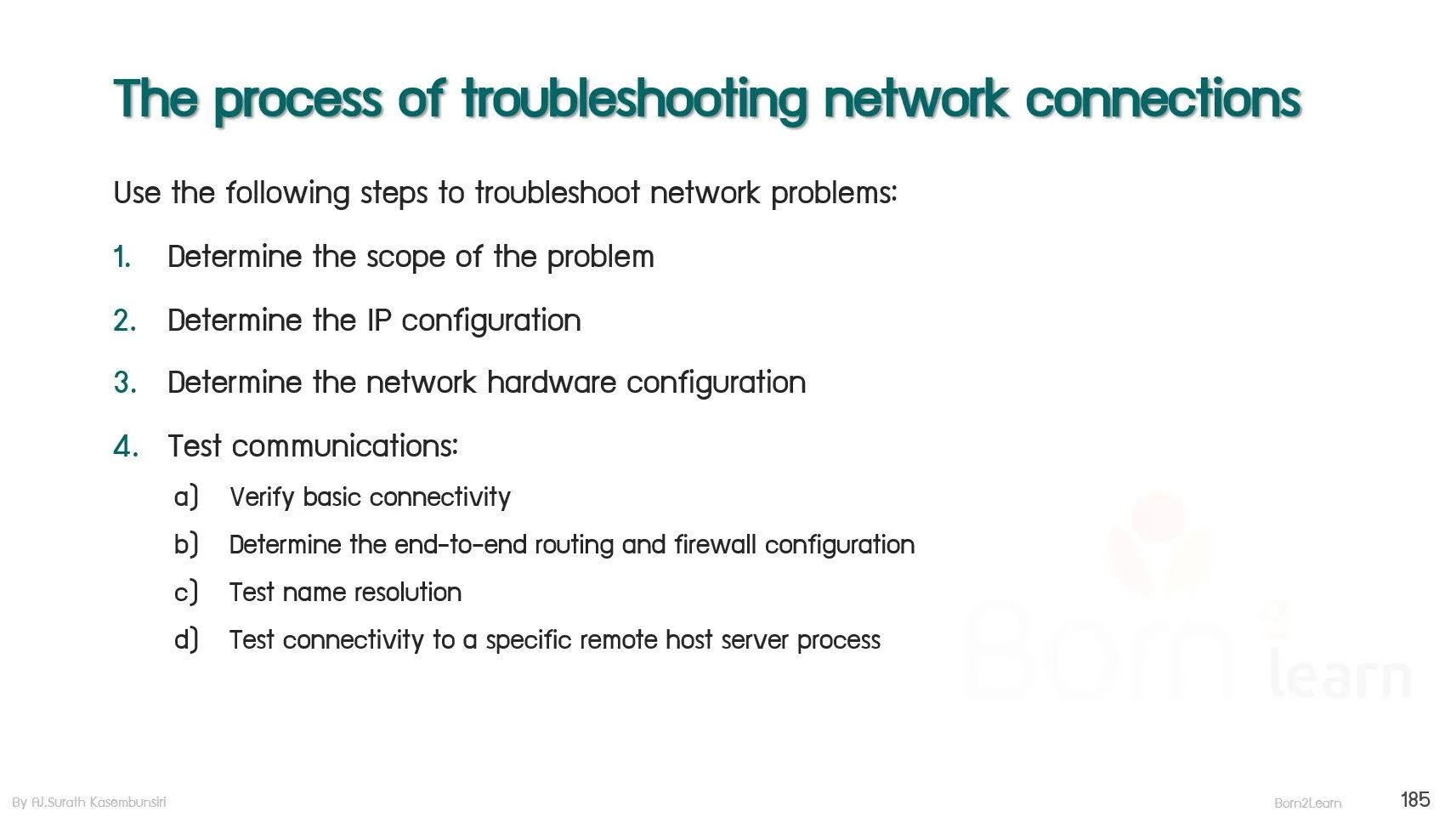

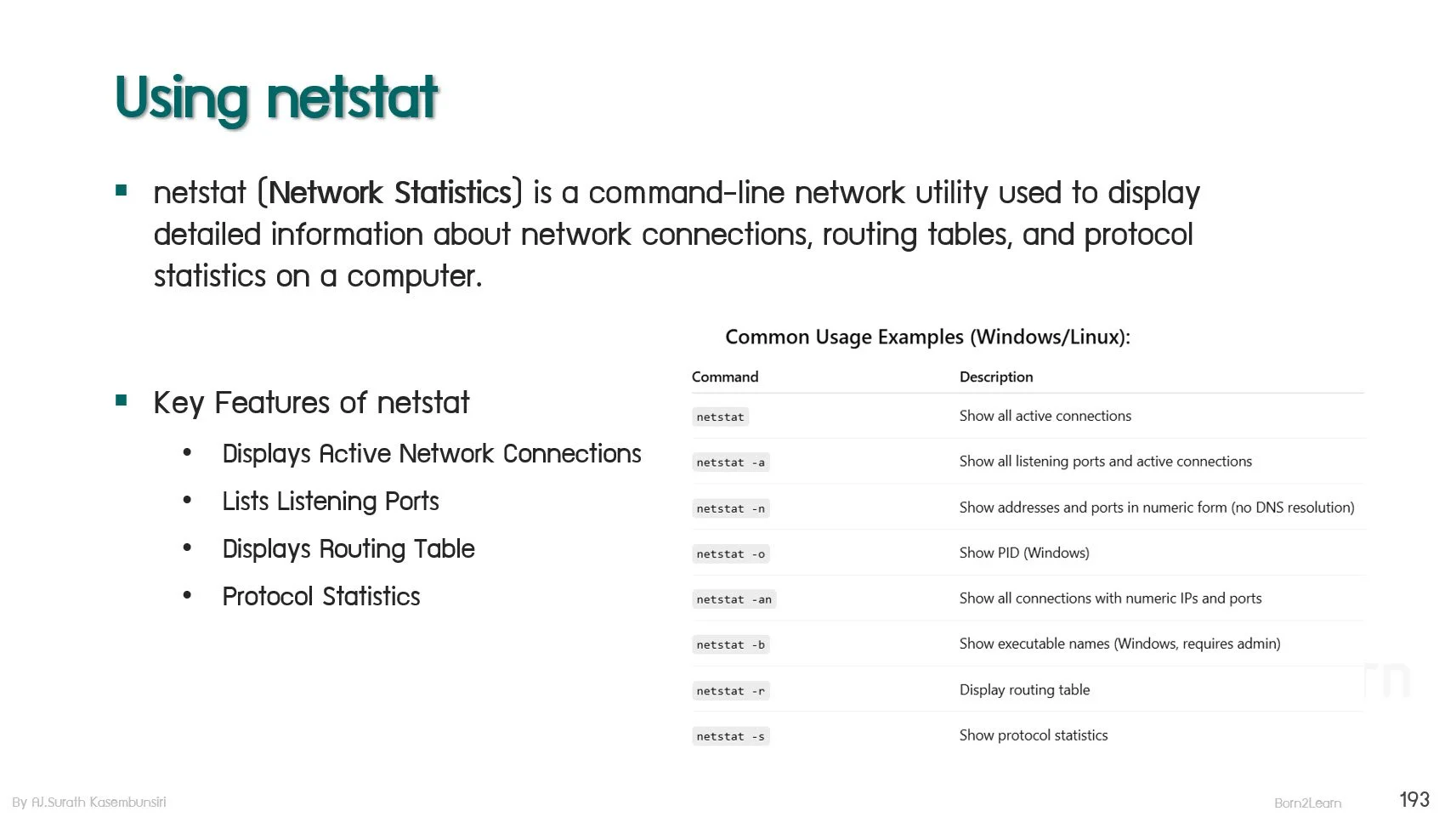


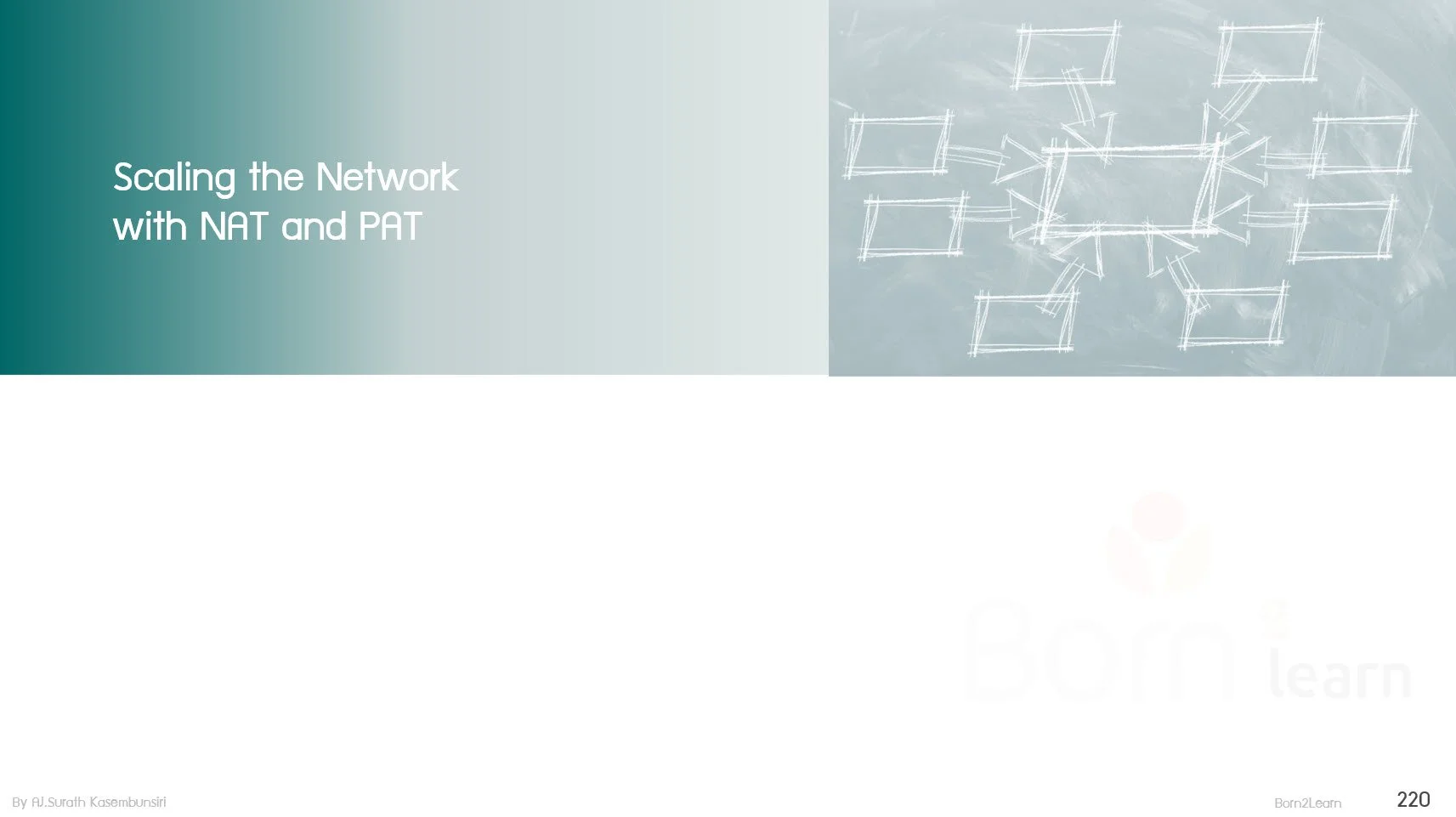


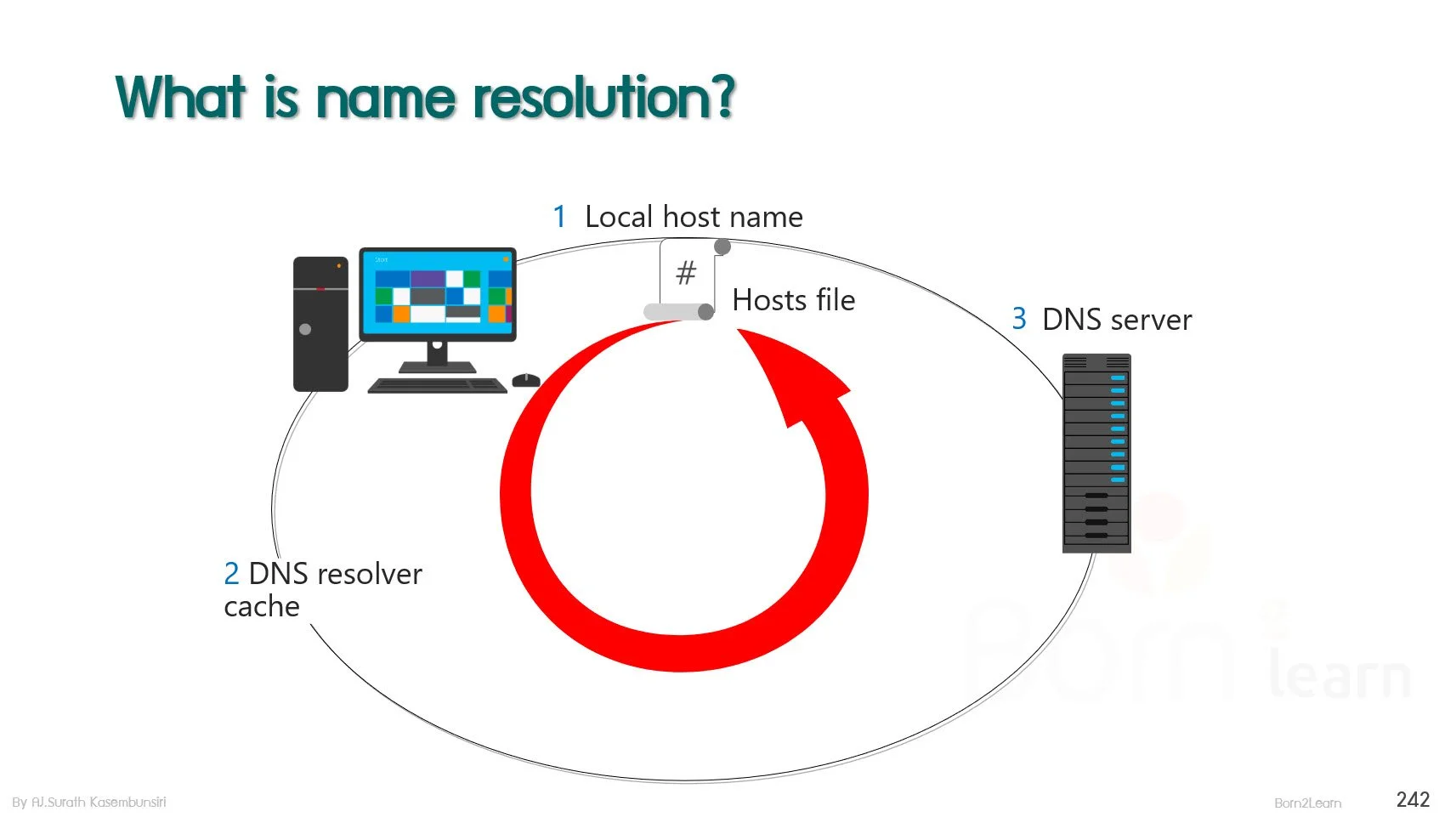

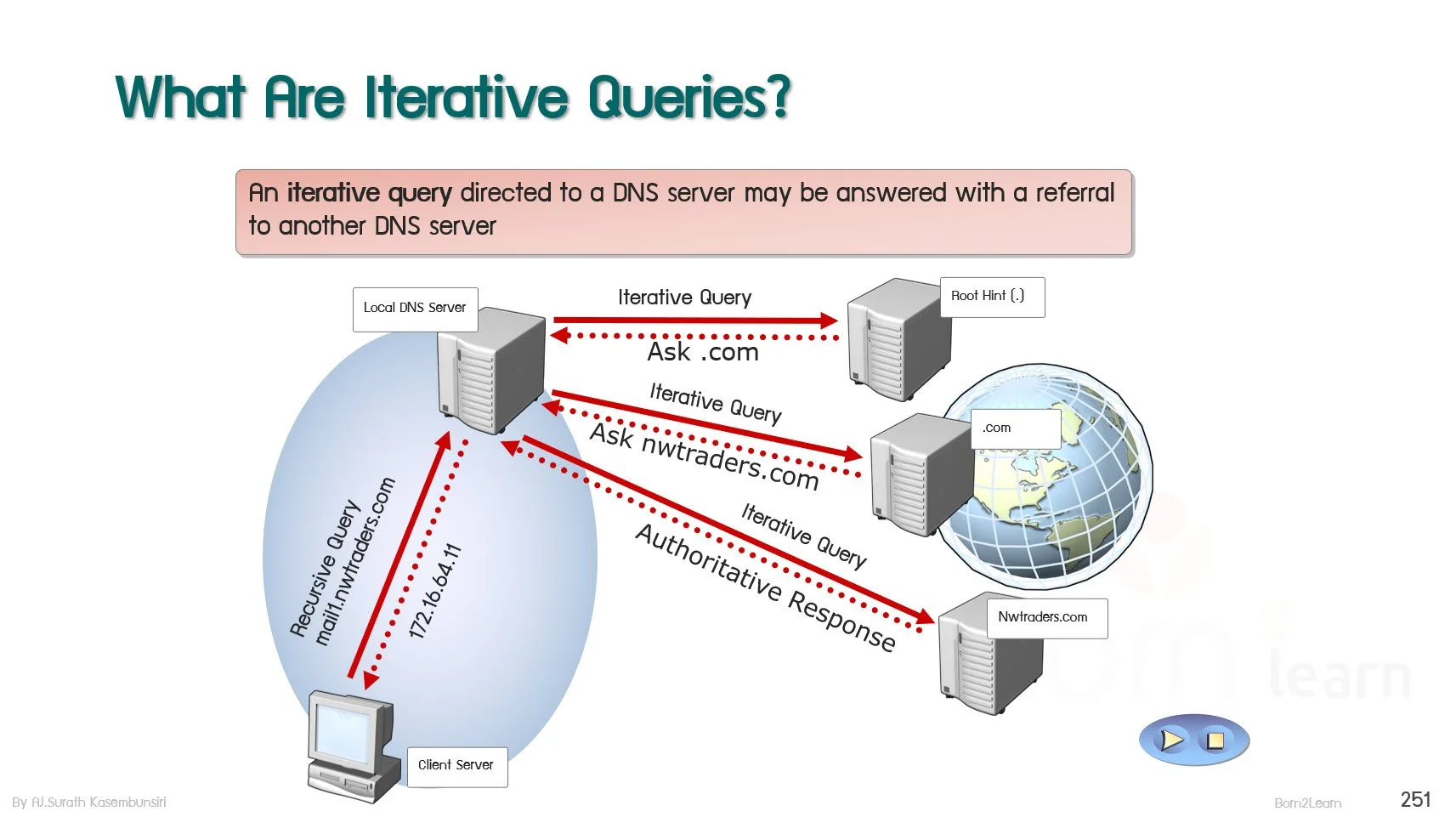


หลักสูตรอบรม : Network Fundamentals and Troubleshooting
ระยะเวลา: 3 วัน (18 ชม.) 9.00 - 16.00 น.
ราคาอบรม/ท่าน : 12,000 บาท/13,500 บาท (Public Training with Online/Onsite)
กรณีเป็น In-house Training จะคำนวณราคาตามเงื่อนไขของงานอบรม
*ราคาดังกล่าวยังไม่รวมภาษีมูลค่าเพิ่ม*
Public Training หมายถึง การอบรมให้กับบุคคล/บริษัท ทั่วไป ที่มีความสนใจอบรมในวิชาเดียวกัน โดยจะมี 2 แบบ
1. อบรมแบบ Online โดย Live ผ่านโปรแกรม Zoom พร้อมทำ Workshop ร่วมกันกับวิทยากร
2. อบรมแบบ Onsite ณ ห้องอบรม ที่บริษัทจัดเตรียมไว้ พร้อมทำ Workshop ร่วมกันกับวิทยากร
หมายเหตุ: - ผู้อบรมต้องนำเครื่องส่วนตัวมาใช้อบรมด้วยตัวเอง
- วันอบรมที่ชัดเจนทางบริษัทจะแจ้งภายหลัง ตามเดือนที่ผู้อบรมแจ้งความประสงค์ไว้ (ทางบริษัทขอสงวนสิทธิ์การปรับเปลี่ยน ตามความเหมาะสม)
In-house Training หมายถึง การอบรมให้กับบริษัทของลูกค้าโดยตรง โดยใช้สถานที่ของลูกค้าที่จัดเตรียมไว้ หรือจะเป็นแบบ Online ก็ได้เช่นกัน และลูกค้าสามารถเลือกวันอบรมได้
ลงทะเบียนอบรมได้ที่
เน้นการทำ Workshop ที่ถูกออกแบบมาอย่างดีเยี่ยม, สนุกสนาน, ครบครัน เพื่อช่วยในการเรียนรู้และทำให้เกิดความเข้าใจได้อย่างง่ายดายที่สุด
#พร้อมเอกสาร lab #ทุกขั้นตอน
(ลิขสิทธิ์ โดย อ.สุรัตน์ เกษมบุญศิริ)
เนื้อหาต่างๆ มีการปรับเปลี่ยน/จัดหมวดหมู่ ใหม่ทั้งหมด เพื่อทำให้ง่ายต่อความเข้าใจ
การันตีครับ ว่า ผู้อบรมทุกคนที่จบจาก course นี้จะได้รับความรู้ทั้งภาคทฤษฏีและภาคปฏิบัติ อย่างครบถ้วน เพื่อนำไปใช้ในการทำงานจริง
📌เรียนรู้ Skill Set ที่จำเป็นสำหรับการเริ่มต้นในสายอาชีพ Network Engineer
📌เข้าใจโครงสร้างเครือข่ายในองค์กร ทั้งในแง่ของ Topology, OSI Model และอุปกรณ์เครือข่ายในแต่ละ Layer
📌ฝึกออกแบบและคำนวณ IP Address/Subnet อย่างมีประสิทธิภาพ พร้อมแนวคิด CIDR และ VLSM
📌รู้จักอุปกรณ์เครือข่ายแต่ละประเภท และบทบาทตาม OSI Model ตั้งแต่ Layer 1 ถึง Layer 7
📌อธิบาย Flow การส่งข้อมูลจากต้นทางถึงปลายทางได้อย่างชัดเจน
📌เจาะลึกบริการ Network สำคัญ เช่น DNS, DHCP และ NAT
📌ฝึกการวิเคราะห์และแก้ปัญหา Network อย่างแม่นยำและรวดเร็ว ด้วยแนวทาง Troubleshooting ที่เป็นระบบ
📌Workshop ตลอดการอบรม ด้วย Lab Practice คุณภาพ เข้าใจง่าย สอนโดย อ.สุรัตน์
📌มาร่วมเรียนรู้ก้าวสู่การเป็น Network Engineer มืออาชีพ กับ Born2Learn
วิทยากร:
อ.สุรัตน์ เกษมบุญศิริ
ผู้เชี่ยวชาญและวิทยากรที่มีประสบการณ์มากกว่า 20 ปีในวงการ
พร้อมด้วยใบรับรองจากบริษัทระดับโลกมากมาย อาทิเช่น Microsoft, CompTIA, ITIL, Cisco และอื่นๆ
หลักการและเหตุผล:
This course is designed to provide participants with a comprehensive technical foundation in computer networking. It covers essential concepts, standards, and practices that form the basis of modern network infrastructure. Emphasis is placed on understanding network architecture, TCP/IP, subnetting, and core services such as DNS, DHCP, and NAT.
In addition to theoretical knowledge, the course incorporates extensive hands-on lab exercises that simulate real-world networking scenarios. These practical sessions aim to develop the participant’s ability to analyze, troubleshoot, and resolve common network issues efficiently and accurately.
วัตถุประสงค์ของหลักสูตร:
Configure host devices and enable communication across internetworks using TCP/IP protocols
Identify the functions and roles of core TCP/IP components across the protocol stack
Utilize major TCP/IP application services
Recognize and avoid common networking and internetworking issues
Perform network troubleshooting using protocol analysis and diagnostic tools
Understand and describe the operation of network equipment including hubs, bridges, switches, and routers
Configure and manage key network services such as DHCP, DNS, and NAT
หลักสูตรนี้เหมาะสำหรับ:
IT professionals responsible for managing or supporting network operations
Beginners or career changers seeking to enter the field of network engineering
System administrators, support technicians, or technical staff requiring a solid foundation in networking concepts
ความรู้พื้นฐาน:
A basic understanding of computer operations and common system functionalities
Fundamental knowledge of network operation concepts
เนื้อหาหลักสูตร:
Module1: Introduction to TCP/IP Networks
Overview of computer networks and their benefits
Types of network applications and user impacts
OSI and TCP/IP Models
Peer-to-peer communication and data encapsulation
Network topologies: Bus, Star, Ring, Mesh
Overview of Layer 1–3 devices (NICs, Switches, Routers)
Addressing and MAC operations
LAN components, Ethernet standards, and cabling
Collision and broadcast domains
Basic switching and MAC address table management
VLANs and trunking configuration
Module2: The Internet Protocol (IP)
IP addressing concepts and address structure
IP classes and reserved address ranges
Subnetting and subnet mask calculations
CIDR and VLSM (Variable Length Subnet Mask)
IP summarization techniques
Hands-on subnetting and VLSM labs
Introduction to IPv6 and address formatting
IPv6 types: Unicast, Multicast, Anycast
IPv6 address assignment and transition mechanisms
Module3: Internetworking with IP Routers
Router components and port types
Static vs. dynamic routing
Routing table and route types
Basic router configuration and IP assignment
Troubleshooting with ping, traceroute, and show commands
Configuring and verifying static routes and default routes
Introduction to OSPF and its hierarchical design
OSPF configuration and verification
Module4: Transport and Protocols
Transport layer concepts: segmentation, flow control, reliability
Comparison between TCP and UDP
TCP/IP application services overview
Mapping between OSI layers and TCP/IP
TCP three-way handshake
Sequence numbers and acknowledgements
Windowing mechanisms in TCP
Network Troubleshooting Best Practices
Host-to-host packet delivery process
Module5: Applications and Management Protocols
Network Address Translation (NAT) and Port Address Translation (PAT)
Static and dynamic NAT configuration
DHCP overview, configuration, and troubleshooting
DHCP lease process and relay setup
DNS fundamentals and name resolution
DNS zone types and record types (A, MX, CNAME, etc.)
DNS configuration and troubleshooting basics

